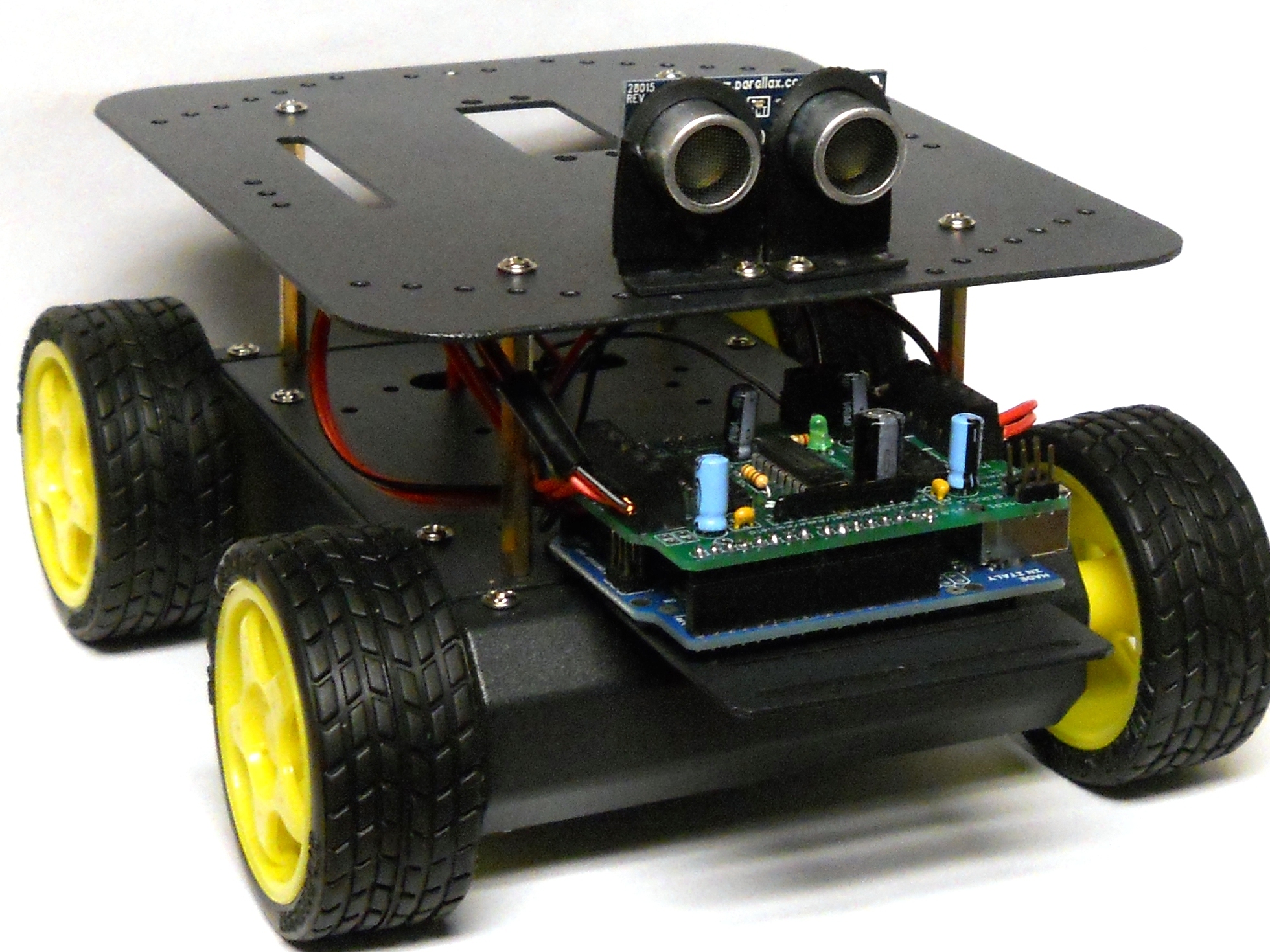You are going to be connecting the Ping sensor to the Motor Shield. On the Motor Shield you will see 3 rows, each with 6 holes. They are marked GND, +5, and A0-5.
Go into your Minitronics Survival Pack and take out the replacement hookup wires. Cut off three pieces (I used different colors), each of a length that can go from the front carriage to the top level. If you are in doubt, just cut it longer than you think you need.
Strip both ends of each wire. Now, take one end of the first wire and insert it from the bottom up into one of the holes in A0-5. Solder this wire in from the top.
The A0-5 holes go to the analog inputs on the Arduino, but these can also be used as digital inputs if specified in the program (which it will be).
Take the second piece of wire and insert it (from the bottom up) into one hole in the GND row. Solder it in from the top.
Finally, take your last piece of wire and insert it (from the bottom up) into a hole in the 5+ row. Solder this in.


